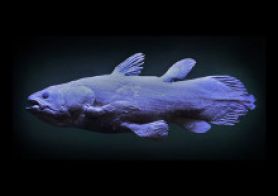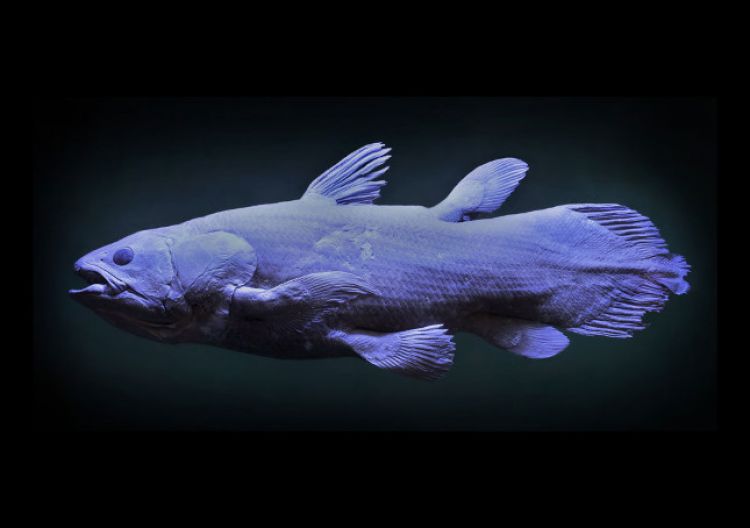Coelacanth (Latimeria chalumnæ)

The coelacanth was long believed to have disappeared 65 million years ago. But in 1938 a specimen was discovered in the estuary of the Chalumna river by a group of South Africans. When compared to its fossil ancestors, its morphology has changed little, which is why it is sometimes incorrectly described as a living fossil.
Thirty years after this discovery, Soilihi Foumou, a fisherman from the village of Salimani Hambou in the Comoro Islands was fishing alone, 200 metres from the shore. From a depth of 150 metres, he reeled in a female coelacanth which he had baited with a hule or "Roudi" fish. This specimen weighed 30.8 kg for a length of 1.20 metres. As part of war damage compensation, the Zoological Museum acquired it in 1967 from Grande Comoro Territory. Wrapped in cloth soaked in formalin, it travelled to Strasbourg inside a zinc-lined container. Previously stored in formaldehyde, this specimen has acquired a new preservative liquid and a new aquarium since 2015.
In 1997, a new species of coelacanth was discovered in Indonesia. According to the International Union for the Conservation of Nature, the two known species of coelacanths are now in danger.
